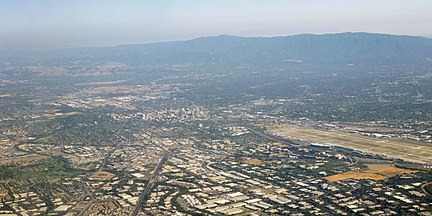Silicon Valley, nestled in the southern region of the San Francisco Bay Area, has become synonymous with innovation, entrepreneurship, and technological advancement. Over the decades, this small geographical area has transformed into a global powerhouse, driving the digital revolution and hosting some of the world’s most influential companies. But what makes Silicon Valley such a fertile ground for innovation? In this blog post, we’ll explore the history, culture, and impact of Silicon Valley, as well as its challenges and future prospects.
The Origins of Silicon Valley
Silicon Valley’s story begins in the mid-20th century. The name “Silicon Valley” was coined in the early 1970s, referencing the silicon-based semiconductor industry that flourished there. However, the roots of its innovation culture can be traced back to Stanford University. Professor Frederick Terman, often regarded as the “father of Silicon Valley,” encouraged students like William Hewlett and David Packard to start businesses, laying the groundwork for the region’s entrepreneurial spirit.
This culture of collaboration between academia and industry was further fostered by the establishment of research parks and the influx of government funding for technological advancements during World War II and the Cold War. By the 1970s and 1980s, companies like Intel, HP, and Apple had emerged, setting the stage for the tech boom that would follow.
The Rise of Tech Giants
The late 20th and early 21st centuries saw Silicon Valley’s meteoric rise as the hub of technology and innovation. Companies like Google, Facebook, and Tesla were born here, fundamentally changing the way the world operates. These tech giants have not only revolutionized industries like communication, transportation, and entertainment but have also created a unique ecosystem where startups thrive alongside established firms.
The presence of venture capitalists willing to invest in high-risk, high-reward ideas has been instrumental in Silicon Valley’s success. The area boasts access to unparalleled financial resources, enabling entrepreneurs to turn their ideas into reality.
Culture of Innovation and Entrepreneurship
One of the defining characteristics of Silicon Valley is its culture of innovation. This ecosystem thrives on openness, collaboration, and a willingness to take risks. Unlike traditional industries, where failure may be stigmatized, Silicon Valley embraces failure as a stepping stone to success. Entrepreneurs and innovators are encouraged to think big, take risks, and learn from their mistakes.
The region also attracts talent from all over the world. Engineers, developers, and visionaries flock to Silicon Valley in search of opportunities, creating a melting pot of cultures and ideas. This diversity contributes to the innovative solutions that emerge from the area.
The Challenges Facing Silicon Valley
Despite its success, Silicon Valley is not without its challenges. One of the biggest issues the region faces is the rising cost of living. Housing prices have skyrocketed, making it difficult for many residents to afford to live near their workplaces. This has led to increased wealth inequality and a growing divide between the tech elite and the broader community.
Another challenge is the criticism of big tech companies for monopolistic practices, data privacy concerns, and their impact on mental health. As these companies grow in influence, they are under increasing scrutiny from governments and the public alike.
Additionally, the relentless pace of innovation has led to burnout among workers in the tech industry. Companies are now grappling with how to maintain productivity while ensuring the well-being of their employees.
Silicon Valley’s Global Impact
Silicon Valley’s influence extends far beyond its geographical boundaries. The technologies developed here have transformed industries worldwide, from healthcare and education to entertainment and agriculture. The region has set a benchmark for how innovation ecosystems can function, inspiring similar hubs in other countries, such as Shenzhen in China and Bangalore in India.
Furthermore, the venture capital model pioneered in Silicon Valley has been adopted globally, enabling entrepreneurs everywhere to access funding and support. The cultural impact of Silicon Valley, with its emphasis on disruption and forward-thinking, has also shaped business practices and attitudes worldwide.
The Future of Silicon Valley
As the world continues to evolve, Silicon Valley will undoubtedly face new challenges and opportunities. The rise of remote work and decentralized teams may shift the focus away from physical proximity, potentially reducing Silicon Valley’s dominance. However, the region’s culture of innovation and its existing network of talent and resources will likely keep it at the forefront of technological advancement.
Emerging technologies such as artificial intelligence, quantum computing, and biotechnology will shape the next wave of innovation, and Silicon Valley is poised to lead the charge. As the world grapples with issues like climate change and global health crises, the solutions developed in Silicon Valley could play a pivotal role in addressing these challenges.
Conclusion
Silicon Valley remains a shining example of what can be achieved when creativity, collaboration, and ambition converge. From its humble beginnings to its current status as the epicenter of technology, the region has consistently pushed the boundaries of what is possible. Despite facing challenges, Silicon Valley’s resilience and adaptability ensure that it will remain a key player in shaping the future of our world.
As we look ahead, the lessons learned from Silicon Valley’s journey serve as a reminder of the power of innovation and entrepreneurship in driving progress and creating a better tomorrow.

Leave a Reply